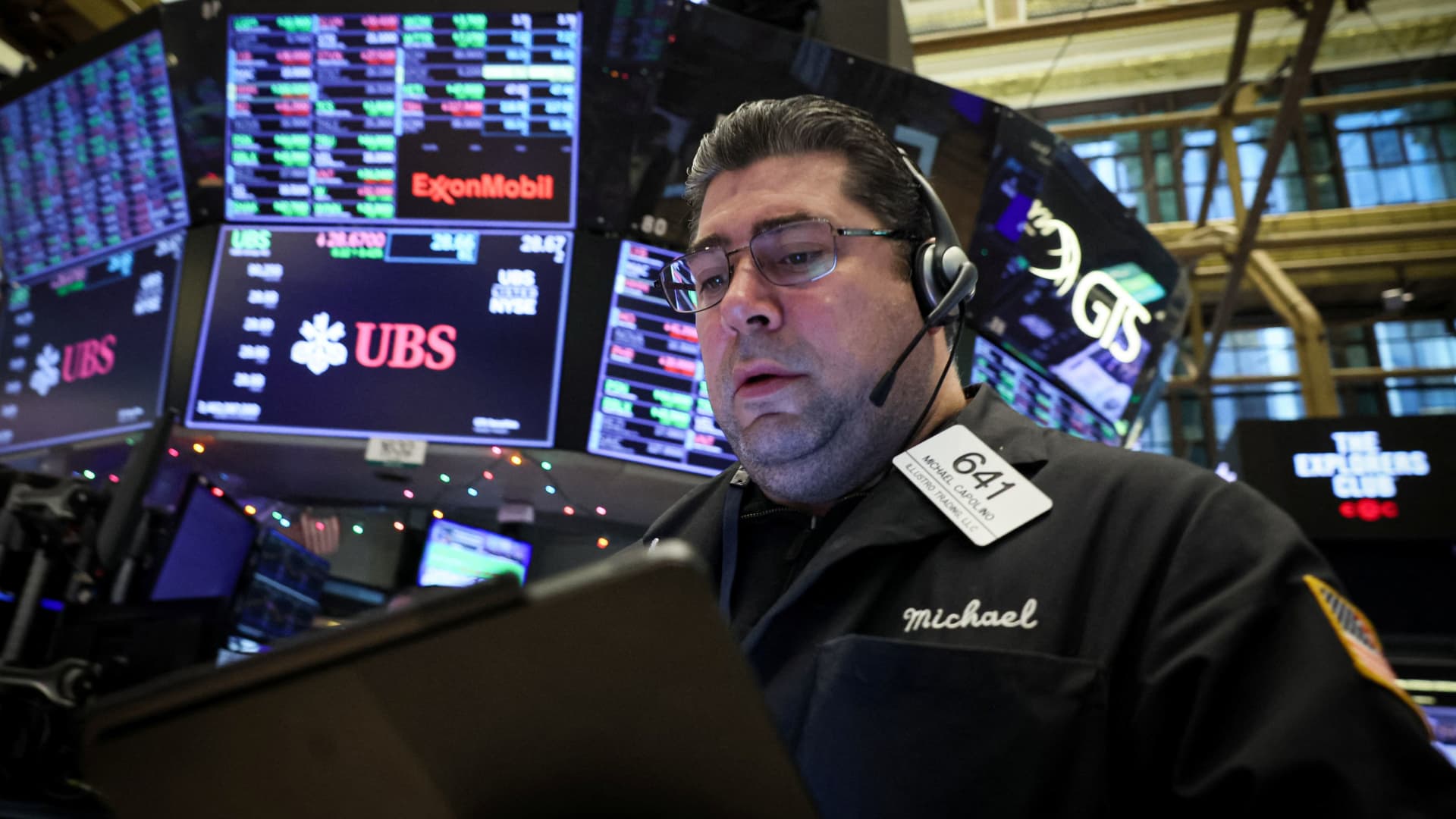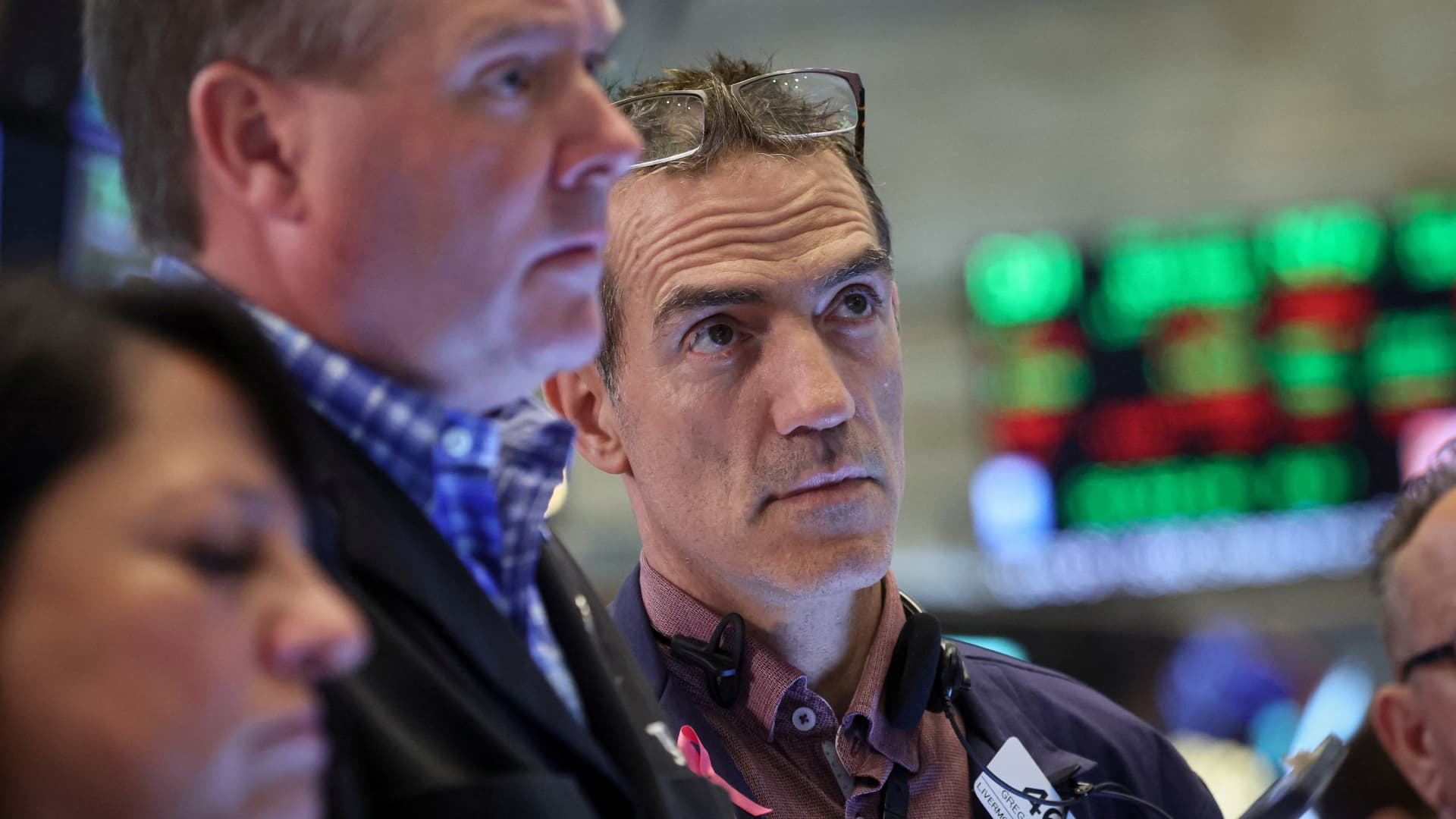
Stock Futures Wobble as Wall Street Grapples with Persistent Inflation Concerns
After a week of choppy trading that culminated in another losing streak for major indices, U.S. stock futures are pointing towards a cautious start to the new week. Lingering anxieties about inflation's stickiness and its potential impact on the Federal Reserve's monetary policy are weighing heavily on investor sentiment. The S&P 500, Dow Jones Industrial Average, and Nasdaq Composite all concluded the previous week in the red, snapping impressive winning streaks for some. This downturn has investors closely monitoring economic data releases and Fed commentary for clues about the future trajectory of interest rates. Are we on the precipice of a deeper correction, or is this merely a temporary pause in the market's upward march? This article delves into the key factors influencing market sentiment, examines the sectors facing the most pressure, and offers insights into what investors should watch in the days ahead.
Inflation's Unyielding Grip: A Deeper Dive into the Data
The primary driver behind the recent market jitters is the persistent nature of inflation. While headline inflation has cooled from its peak, key underlying measures, such as core inflation (excluding food and energy), remain stubbornly above the Federal Reserve's 2% target. This has led to renewed concerns that the Fed may need to maintain its restrictive monetary policy stance for longer than initially anticipated, potentially dampening economic growth and corporate earnings.
Several factors are contributing to this inflationary pressure:
- Strong Labor Market: A tight labor market continues to fuel wage growth, which in turn puts upward pressure on prices. The latest jobs report, while showing some signs of moderation, still indicates a robust demand for labor.
- Supply Chain Bottlenecks: Although significantly improved, lingering supply chain disruptions in certain sectors are still contributing to higher costs for businesses, which are often passed on to consumers.
- Geopolitical Tensions: Ongoing geopolitical uncertainties, particularly in regions crucial for energy and commodity production, are adding to inflationary pressures.
Analysts are closely scrutinizing upcoming inflation data releases, including the Consumer Price Index (CPI) and the Producer Price Index (PPI), for any signs of further moderation. A hotter-than-expected reading could trigger another round of selling pressure in the market, while a cooler reading could provide some relief and support a rebound.

Sector Spotlight: Identifying the Winners and Losers
The impact of inflation and rising interest rates is not uniform across all sectors. Some sectors are more vulnerable than others, while others may even benefit from the current environment. Here's a look at some key sectors and their potential performance in the coming weeks:
- Technology: Tech stocks, which have been leading the market rally for much of the year, are particularly sensitive to interest rate hikes. Higher rates increase the cost of capital, making it more expensive for tech companies to invest in growth initiatives. Furthermore, valuations in the tech sector are often based on future earnings, which are discounted at a higher rate in a high-interest rate environment.
- Consumer Discretionary: This sector is heavily reliant on consumer spending, which is likely to be negatively impacted by inflation and rising interest rates. As consumers face higher prices for essential goods and services, they may cut back on discretionary purchases, such as travel, entertainment, and luxury goods.
- Energy: Energy stocks may benefit from inflationary pressures, as higher energy prices tend to boost their earnings. However, concerns about a potential economic slowdown could weigh on demand for energy, limiting their upside potential.
- Healthcare: Healthcare is generally considered a defensive sector, as demand for healthcare services is relatively inelastic. This means that healthcare companies are less likely to be affected by economic downturns.
- Financials: Financial stocks can benefit from rising interest rates, as they can charge higher interest rates on loans. However, concerns about a potential recession could weigh on loan growth and increase the risk of loan defaults.
Investors should carefully consider the sector-specific implications of inflation and rising interest rates when making investment decisions.

The Fed's Next Move: Decoding the Signals
The Federal Reserve's monetary policy decisions will be crucial in determining the market's direction in the coming months. Investors are closely monitoring Fed officials' speeches and statements for clues about their thinking on inflation and interest rates. The Fed's next policy meeting will be a key event, as policymakers will have the opportunity to adjust their guidance based on the latest economic data.
Several scenarios are possible:
- Hawkish Scenario: If inflation remains stubbornly high, the Fed may continue to raise interest rates aggressively, potentially triggering a recession.
- Dovish Scenario: If inflation shows clear signs of moderating, the Fed may slow down its pace of rate hikes or even pause them altogether, which could provide a boost to the market.
- Balanced Approach: The Fed may attempt to strike a balance between fighting inflation and supporting economic growth, potentially raising interest rates gradually while signaling a willingness to adjust its policy stance as needed.
Predicting the Fed's next move is a challenging task, but investors should pay close attention to the economic data and Fed commentary to assess the probabilities of each scenario.

Navigating the Volatility: Strategies for Investors
In the face of market volatility and uncertainty, investors should consider the following strategies:
- Diversification: Diversifying your portfolio across different asset classes and sectors can help to reduce risk.
- Long-Term Perspective: Maintaining a long-term investment horizon can help to weather short-term market fluctuations.
- Dollar-Cost Averaging: Investing a fixed amount of money at regular intervals can help to mitigate the risk of buying high and selling low.
- Risk Management: Assessing your risk tolerance and adjusting your portfolio accordingly is crucial in a volatile market.
- Seek Professional Advice: Consulting with a financial advisor can provide valuable guidance and support.
The current market environment presents both challenges and opportunities for investors. By staying informed, remaining disciplined, and adopting a well-thought-out investment strategy, investors can navigate the volatility and achieve their long-term financial goals.

Post a Comment